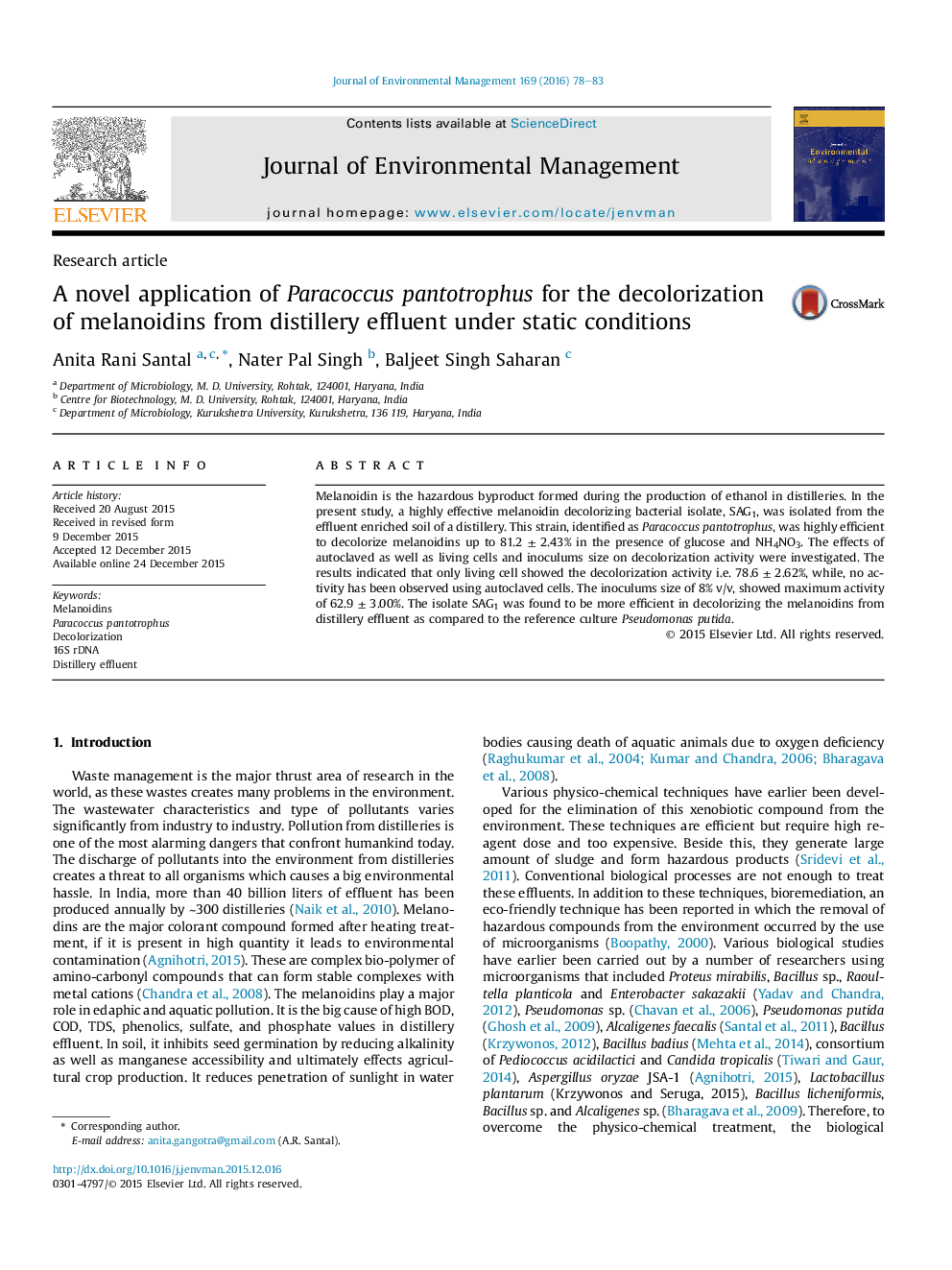| Article ID | Journal | Published Year | Pages | File Type |
|---|---|---|---|---|
| 1055438 | Journal of Environmental Management | 2016 | 6 Pages |
•Paracoccus pantotrophus efficiently decolorizes melanoidins.•Maximum decolorization was 81.2 ± 2.43% in the presence of glucose and NH4NO3.•The decolorization mechanism was due to absorption by the bacteria.•The decolorization was achieved under non-shaking conditions.
Melanoidin is the hazardous byproduct formed during the production of ethanol in distilleries. In the present study, a highly effective melanoidin decolorizing bacterial isolate, SAG1, was isolated from the effluent enriched soil of a distillery. This strain, identified as Paracoccus pantotrophus, was highly efficient to decolorize melanoidins up to 81.2 ± 2.43% in the presence of glucose and NH4NO3. The effects of autoclaved as well as living cells and inoculums size on decolorization activity were investigated. The results indicated that only living cell showed the decolorization activity i.e. 78.6 ± 2.62%, while, no activity has been observed using autoclaved cells. The inoculums size of 8% v/v, showed maximum activity of 62.9 ± 3.00%. The isolate SAG1 was found to be more efficient in decolorizing the melanoidins from distillery effluent as compared to the reference culture Pseudomonas putida.
